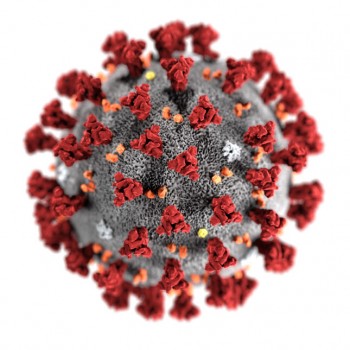WASHINGTON, May 15, 2020—A new survey of primary care clinicians, conducted May 8-11, shows that clinicians have been pushed to the breaking point in their response to the COVID-19 pandemic, with 84% of clinicians reporting that they are experiencing severe or close to severe stress and 28% saying burnout is at an all-time high.
In its ninth consecutive week, the survey was conducted by The Larry A. Green Center in partnership with the Primary Care Collaborative (PCC).
“This week’s survey shows that primary care has completely transformed in a matter of weeks, with high use of video and telephone-based care and extensive proactive outreach to patients to meet their needs,” said Rebecca Etz, PhD, Co-Director of The Larry A. Green Center and Associate Professor of Family Medicine and Population Health at Virginia Commonwealth University. “While primary care steps up, far too little has been done to support them and they are on the verge of collapse. Over half of those surveyed said we aren’t ready for the next wave of the pandemic, and 70% of them fear if primary care fails, so does the health care system.”
The latest survey reveals a range of ways that clinicians are experiencing risk and personal suffering while trying to meet the needs of their patients during the health crisis. Primary care practices are closing temporarily or permanently, operating with reduced staff, teetering on the brink of financial collapse, and clinicians are experiencing extreme stress and burnout.
“Patients are relying on primary care for advice and assistance during COVID-19, but without immediate financial support, primary care might not be there when patients need help,” said Ann Greiner, President and CEO of the Primary Care Collaborative. “The next stimulus package must directly channel more relief to primary care practices now so that they can continue helping their patients through this pandemic. The package must also address ongoing prevention, chronic care management and behavioral health needs.”
This week’s survey results reflect input from 2,774 primary care physicians, nurse practitioners, and physician assistants. Responses came from all 50 states and Washington, D.C.; the top five reporting states were Texas (9%), California (8%), New York (7%), Oregon (5%), and Virginia (4%). 65% of respondents work in internal medicine, and other specialties include family medicine (22%), pediatrics (5%), geriatrics (4%), and other (4%). Over 60% of respondents work in practices with fewer than 10 clinicians (37% with 1-3 clinicians). A large portion—27%—of responses came from clinicians working in direct primary care or a membership-based practice. Respondents were equally likely to own their practice (40%) or work for a practice owned by a hospital or health system (40%).
Visit PCC’s website for:
- Executive summary of the survey
- Full details of the survey
- Infographic
Experts are available to provide insight and comment on the survey:
- Ann Greiner, MCP, President & Chief Executive Officer, Primary Care Collaborative
- Rebecca S. Etz, PhD, Co-Director of The Larry A. Green Center and Associate Professor of Family Medicine and Population Health at Virginia Commonwealth University
If you would like to speak with either of these experts, please contact:
Stephen Padre
Communications Manager, Primary Care Collaborative
spadre@thepcc.org
202-417-3911
This survey is conducted weekly with an aim to measure the impact of COVID-19 on their primary care practices. Results are reported on the websites of the Larry A. Green Center and PCC.
Recent News
April 22, 2024
March 19, 2024
February 28, 2024
February 22, 2024 | Conversations on Health Care
May webinar highlights: “The Commercial Market: Alternative Payment Models for Primary Care” Nate Murray explains w… https://t.co/KX9Wi2w6oY —
10 months 2 weeks ago
@CMSinnovates’ primary care strategy is rooted in a 2021 @theNASEM’s report which called #primarycare “foundational… https://t.co/glbPxvCysg —
10 months 2 weeks ago
@CMSinnovates has a new #primarycare strategy, envisioning “ACO-based primary care model tests that may focus on pr… https://t.co/aJGF1z411l —
10 months 2 weeks ago
- Page 1
- ››
Secondary menu
Copyright © 2024 Primary Care Collaborative




